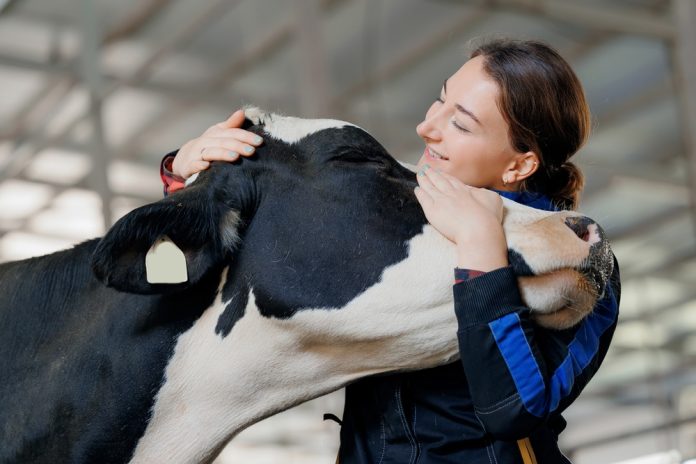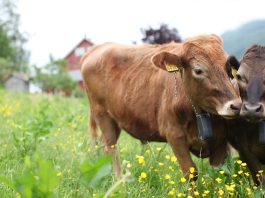As the demand for sustainable and holistic farming practices grows, many dairy farmers are exploring complementary and alternative medicines (CAM) to support herd health.
A recent study from the University of Bristol reveals that open discussions about CAM could improve relationships between farmers and veterinarians, reduce antibiotic use, and enhance herd management.
The research provides valuable insights into how UK dairy farmers perceive and utilise CAM, showcasing a wide variety of treatments and approaches.
What are complementary and alternative medicines?
Complementary and alternative medicines encompass treatments and practices that fall outside of conventional veterinary care.
These include herbal remedies, homoeopathy, environmental enrichment, and various natural therapies aimed at supporting animal health.
Unlike mainstream veterinary medicine, which relies on scientific evidence and clinical trials, CAM often focuses on holistic and natural healing approaches.
While some farmers integrate CAM into their herd management strategies, veterinary organisations such as the Royal College of Veterinary Surgeons (RCVS) and the British Veterinary Association (BVA) remain cautious, advocating for evidence-based practices.
How dairy farmers view CAM
The study found that farmers have varied interpretations of CAM. Some consider herbal treatments and topical udder creams like Uddermint® as CAM, while others view this as standard care.
Additionally, distant healing, observation-based techniques, and food-based remedies were also mentioned.
The diversity in CAM usage underscores the need for clearer definitions and better communication between farmers and veterinarians.
A holistic approach to herd health
For many farmers, CAM represents more than just an alternative to conventional medicine; it aligns with a broader philosophy of holistic farming.
Farmers using CAM often prioritise natural remedies to support an animal’s innate healing abilities. This approach frequently intersects with organic farming and production systems that limit antibiotic use.
By incorporating CAM, some farmers aim to minimise pharmaceutical interventions while maintaining animal welfare.
The link between CAM and organic farming
Organic dairy farms and those operating under Production Without Antibiotics (PWAB) contracts are more likely to explore CAM due to restrictions on antibiotic use.
Farmers in these systems seek alternative ways to prevent and treat illnesses, consulting a range of advisors, including veterinarians specialising in CAM.
However, with limited scientific evidence supporting many CAM practices, the challenge remains in balancing alternative treatments with proven veterinary methods.
Strengthening farmer-veterinarian relationships
Encouraging open discussions about CAM could enhance trust and collaboration between farmers and veterinarians.
By understanding why farmers turn to alternative treatments, vets can provide better guidance on integrating safe and effective practices into herd management.
This dialogue could ultimately contribute to reduced antibiotic use and improved overall herd health.
Dr Kayleigh Crouch, lead author who conducted the research for her PhD at the University of Bristol, added: “This is the first study to explore CAM use on dairy farms in a UK context.
“It is important for vets and advisors to acknowledge and discuss what herd health management approaches are used and explored by farmers. More open discussion surrounding the use of specific CAM practices and products on dairy farms would support better collaboration between dairy farmers, vets and other advisors in support of animal health.
“This would enable further study and work towards co-produced herd health plans that are farm-specific and acknowledge farmers’ own goals and values. Further research in this area would be useful to gain a wider breadth of views and practices.
“The discussion about CAM in the veterinary literature often focuses on homoeopathy, but this does not acknowledge the widely used products such as udder creams/oils or broader approaches such as animal observations or environmental enrichment, which some farmers consider CAM.
“This study suggests that it may be more helpful to refer to specific products and practices by name rather than using the term CAM more broadly to avoid any confusion or negative associations with the term CAM.
“It is also important to acknowledge the potentially positive impacts of these products and practices, for example, where they support reduced use of antibiotics.
“Research should be conducted into how CAM practices contribute to the One Health approach for antimicrobial resistance impact reduction and how they influence animal housing, management, and interactions to identify potential positive practices.”
Moving forward with CAM in dairy farming
While the debate over complementary and alternative medicines continues, its role in dairy farming is undeniable.
With growing interest in natural and holistic approaches, further research and collaboration between farmers and veterinarians will be crucial in determining the best ways to integrate complementary and alternative medicines into responsible herd health management.









